The light-emitting diode
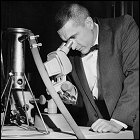 Working at General Electric’s New York R&D lab, scientist Nick Holonyak fires up the first working visible-spectrum light-emitting diode, producing a single small red light. (Texas Instruments had already created infrared LEDs the year before.) Too expensive to mass-produce initially, LEDs will become commonplace in calculators and other electronic devices in the 1970s, though more modern variants in the 1990s will lead to a revolution in lighting and display technology, resulting in flat-screen computer monitors and televisions and spinoff technology such as tablet computers and portable telephones with LED-based touchscreens – all unimaginable in 1962.
Working at General Electric’s New York R&D lab, scientist Nick Holonyak fires up the first working visible-spectrum light-emitting diode, producing a single small red light. (Texas Instruments had already created infrared LEDs the year before.) Too expensive to mass-produce initially, LEDs will become commonplace in calculators and other electronic devices in the 1970s, though more modern variants in the 1990s will lead to a revolution in lighting and display technology, resulting in flat-screen computer monitors and televisions and spinoff technology such as tablet computers and portable telephones with LED-based touchscreens – all unimaginable in 1962.

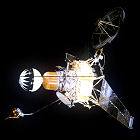 NASA launches the Ranger 5 lunar probe, built by Jet Propulsion Laboratory and intended to go directly to the moon, transmitting pictures of the surface back to Earth until it impacts the lunar surface. An onboard system failure cuts off solar power, leaving Ranger 5 on its limited supply of battery power; by the time it reaches the moon, its power-starved systems have shut down and it’s wide of the mark, missing the moon by 450 miles. A sweeping internal review of the Ranger program commences at both JPL and NASA, with the review boards finding design faults and discovering that the high-heat sterilization process, intended to keep Earthly microbes from contaminating the moon, may also be causing problems. With Ranger now considered a support program for the upcoming Apollo flights to the moon, NASA is under intense scrutiny and replaces the managers of the Ranger project prior to the next launch, also instituting another redesign of the spacecraft.
NASA launches the Ranger 5 lunar probe, built by Jet Propulsion Laboratory and intended to go directly to the moon, transmitting pictures of the surface back to Earth until it impacts the lunar surface. An onboard system failure cuts off solar power, leaving Ranger 5 on its limited supply of battery power; by the time it reaches the moon, its power-starved systems have shut down and it’s wide of the mark, missing the moon by 450 miles. A sweeping internal review of the Ranger program commences at both JPL and NASA, with the review boards finding design faults and discovering that the high-heat sterilization process, intended to keep Earthly microbes from contaminating the moon, may also be causing problems. With Ranger now considered a support program for the upcoming Apollo flights to the moon, NASA is under intense scrutiny and replaces the managers of the Ranger project prior to the next launch, also instituting another redesign of the spacecraft.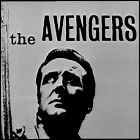 British broadcaster ABC airs the 30th episode of Sydney Newman’s spy series The Avengers, starring Patrick Macnee and Honor Blackman.
British broadcaster ABC airs the 30th episode of Sydney Newman’s spy series The Avengers, starring Patrick Macnee and Honor Blackman.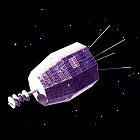 NASA launches the experimental, RCA-built Relay 1 communications satellite. This is the first satellite to relay television signals from the United States to Japan, including the first word of the assassination of President Kennedy in
NASA launches the experimental, RCA-built Relay 1 communications satellite. This is the first satellite to relay television signals from the United States to Japan, including the first word of the assassination of President Kennedy in 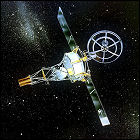 NASA’s unmanned Mariner 2 probe is the first unmanned spacecraft to successfully reach and take measuresments of another planet in the solar system. Passing by Venus at a distance of 25,000 miles, Mariner 2 detects a cool atmosphere with a blistering hot surface underneath it – quickly dispelling any hopes of finding life there. Mariner 2 isn’t equipped with any cameras, which is just as well: unless any cameras had ultraviolet filters, they would have seen nothing but featureless clouds at Venus. Mariner 2 continues on into a solar orbit, shutting down early in 1963.
NASA’s unmanned Mariner 2 probe is the first unmanned spacecraft to successfully reach and take measuresments of another planet in the solar system. Passing by Venus at a distance of 25,000 miles, Mariner 2 detects a cool atmosphere with a blistering hot surface underneath it – quickly dispelling any hopes of finding life there. Mariner 2 isn’t equipped with any cameras, which is just as well: unless any cameras had ultraviolet filters, they would have seen nothing but featureless clouds at Venus. Mariner 2 continues on into a solar orbit, shutting down early in 1963.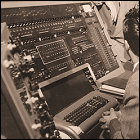 In the Hillsboro Press-Gazette, ENIAC and UNIVAC co-creator Dr. John Mauchly predicts that there will come “a time when everyone will carry his own personal computer”, even going so far as to anticipate portable “hand computers” used for such tasks as interactive shopping lists. Mauchly’s predictions aren’t 100% accurate, however: by the 21st century, groceries do not arrive via delivery chutes in every home, and he fails to anticipate the use of “hand computers” to access social networks or view amusingly captioned photos of cats.
In the Hillsboro Press-Gazette, ENIAC and UNIVAC co-creator Dr. John Mauchly predicts that there will come “a time when everyone will carry his own personal computer”, even going so far as to anticipate portable “hand computers” used for such tasks as interactive shopping lists. Mauchly’s predictions aren’t 100% accurate, however: by the 21st century, groceries do not arrive via delivery chutes in every home, and he fails to anticipate the use of “hand computers” to access social networks or view amusingly captioned photos of cats.